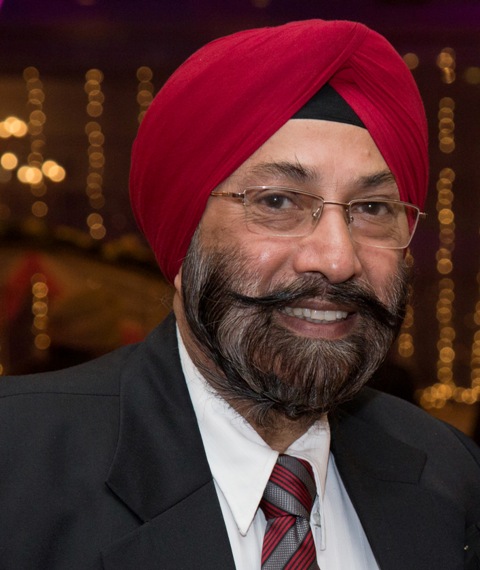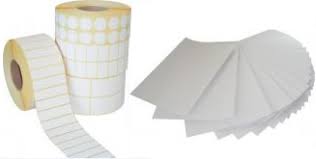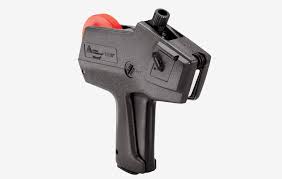 |
| Late Karan Khanna |
The younger
generation grew up to take charge while the founder promoters were ageing and
stepping back to take up advisory roles. At this time, it will be appropriate
to mention the important legendary persons who contributed to the establishment
and growth of label industry and passed away in this period. Surinder Singh
Arora of Amritsar Printing press had worked his way into the centre stage of an
evolving label industry in India. He excelled not only in producing labels but
also representing international companies like the Cham Paper group, Focus
label machinery, etc. He expired on 20th April 2006. Another legend Kartar
Singh Dunglay the founder and owner of Good Work Company New Delhi breathed his
last in the intervening night of 7th and 8th of April 2013. He was 78
years of age. His was the first label company to partner with a European
company to form a joint venture titled “Reydun” with Belgium based Reynders led
by Mark Reynders. It is ironic that a year later, on the on 5th of April
2014 at the age of 75 years, another legend in the label industry Jagdish
Zaveri breathed his last in Mumbai leaving the reigns of his business to his
son Sandeep Zaveri. Amongst others who passed away during this period include
Ramesh Doshi of Shanti Lal Doshi Pvt. Ltd., a company that pioneered the
production of release papers and self-adhesive labelstocks in India and Karan
Khanna young son of Prem Khanna of Rachna Overseas, in the prime of his youth,
at a time when he was showing his calibre in taking over and growing the
company established by his father. Karan passed away after a brief illness.
 |
| Priyata Raghavan |
Indian label
industry did not have many active businesswomen as managers. That started to
change as the new millennium progressed, Indian women started acquiring
technical and management skills to lead high levels of investments in the label
industry which was registering high growth rate. It is an imperative to
recognize the contribution of these women. Honey Vazirani was one of the
earliest female managers in the Indian label industry. From being a management
trainee in 1989, she rose to be the head of the labelling division of Thane
based Paper Products Limited then referred to as PPL. This company was
eventually acquired by Global flexible packaging major Huhtamaki and was
renamed Huhtamaki-PPL. After spending over 25 years in the company Honey took a
break and later started her own maiden venture Leap Digiprints with an HP
Indigo digital label press to make digitally printed labels. Kusum Dunglay,
wife of Kartar Singh Dunglay, an MBA from London University worked actively at
the Dunglays’ venture Good Work Co. and led their foray into label manufacturing.
After the death of her husband she carried the mantle of leadership with
support of her son Rouble Dunglay. Amila Singhvi is another lady who grew her
company International Print-O-Pack (IPP) from being a pre-press house to being
leading offset printers and packaging manufacturers. She entered label
manufacturing but with her package printing business growing multifold, she
quit the narrow web label business to further grow IPP into one of the largest
print packaging producers. Bharat Mehta of Super Labels Mumbai was one of the
first few self-adhesive label printers in India. Super Labels attained growth
with a silent support from Bharat Mehta’s wife Meena Mehta, a B. Sc chemistry.
For over 20 years she was driving the organization through motivation,
enthusiasm and participating in all decision making, even after their sons
Dhaval and Darshan joined them. The company eventually became a joint venture
with the world’s largest Label company CCL. Unfortunately, the relationship
between the partners soured and the JV collapsed. Sandhya Shetty a graduate in
Chemistry and Masters, in management Studies (Marketing), worked for 8 years in
the field of business research and analysis. She worked on projects involving
Government contracts, Defence sector in the US and in the hospitality sector in
India. In 2008 at Labelexpo India she bought a Nilpeter to initiate her foray
into labels as Synergy Packaging Pvt. Ltd. Shweta Sheth, an alumnus of Amherst,
Massachusetts USA, was actively involved in the working of Primark labels, a
part of the General Metallisers Group, as a director. Renuka Raj, an MBA from
IIFT Delhi setup the first flexographic narrow web label printing company in
the state of Andhra Pradesh. Completing her post-graduation course from IIM Lucknow,
Priyata Raghavan joined the FMCG division of ITC Limited, before moving over to
Sai Security Printers, a company owned by her father, Vijay Raghavan. Priyata
has led the company’s label printing operations to profitability and an
emphatic presence in the high-quality label segment. Other women who helped
their spouses or families in business include Meenakshi Mittal wife of Trilok
Mittal of Wonderpac and Neha Jain wife of Shakti Jain of Great Eastern IDtech.
Usage and growth
of labels is directly linked to retail selling.
Retailing in India is big part of Indian economy and accounts
for about 10 percent of its GDP. Organised retail enhances the rates of growth
in retail due to marketing efforts of brand owners to motivate consumers who
reach out impulsively to lift products off the store shelfs at the spur of the
moment. Time had come for rapid growth in organised retail, Government of India
saw the potential and foresaw the fillip it would get by attracting foreign
Direct investment or FDI, which was a major monetary source for economic
development in India. Indian retailing industry, up to 2003 was
limited to the local owner driven colony shops referred to as kirana stores. As
the decade of 2000 progressed, larger format organised self-service stores
started to surface in many areas of urban India and continued being set up
until 2010. This was time for FDI, as investors around the world were eyeing
this massive middle-class market to make substantial investments and acquire a
sizeable share of it, but government disallowed FDI in multi-brand retail, forbidding foreign ownership in
supermarkets, convenience stores or any retail outlets. Even single-brand
retail was limited to 51% ownership. In November 2011 announcing reforms, FDI
was allowed in retail however due intense political pressure it was put on hold
a month later. In a series of moves in 2012, FDI was allowed in retail and
global retailers became active in India. This is the time that started to
witness an increase in label press installations across India and in all
segments and categories of labels. As mentioned earlier organised retail spells
enhanced need of labels bringing rapid growth to the labels industry.
International
interest in the Indian label market started becoming an indulgence. In 2005
Belgium based Reynders set up a joint venture Reydunn at Manesar Gurgaon with
Dunglays of Good Work Co. New Delhi. The partnership did not work out and in
2007-2008 they parted ways, but Reynders stayed on and started their wholly
owned subsidiary at Chopanki near Bhiwadi in Rajasthan. Brady Corporation
founded in 1914 in Wisconsin, USA, established their manufacturing unit in
Bangalore in March 2006. In December 2007 Printcare PLC Srilanka established
their wholly owned subsidiary in Coimbatore Tamilnadu titled Printcare India
Private Limited specializing in designing and printing Teabag Tags, Teabag
Envelopes and labels. Printcare India began its operations in June 2008. Around
the same time Mikael Dahl of JV Nordvalls Sweden entered into a joint venture
with Venu Ayyar of Laxmi Compugraphics. This venture also did not take off and
was called off later in 2012. These happenings did not deter the international
interest in investing in the large Indian market. In early February 2012 the
industry was surprised to hear that Gururaj Ballarwad led Wintek Flexoprints
based in Bangalore India, had been acquired by Hyderabad based ITW Signode, ITW
India Ltd., a subsidiary of the multi-billion Dollar fortune 200 global
industrial products company ITW is head quartered in Illinois, USA.
Just about two
weeks later yet another European multinational label and
packaging company Skanem invested in India's biggest label printers
Interlabels, Mumbai. Headed by the brothers Bhavin and Gautam Kothari,
Interlabels had been in the forefront of label
industry. Bhavin Kothari has been one of the founders of LMAI (Label
Manufacturers Association of India) and later the President of this
association. In September 2012 Mumbai based Positive Packaging Industries Ltd.
the flagship company of Enpee Group, an international conglomerate with
over 50 years of business experience, acquired Bangalore based SGRE Labels
Private Limited. Positive Packaging has been a pioneer in flexible packaging
with state-of-the-art facilities located strategically in India, Nigeria and
the U.A.E. Just another few weeks down, the news came that Mumbai based
Webtech labels lead by Amar Chhajed and cousin Jitesh Chhajed is another
leading label company that has been acquired by an internationally renowned
company, Huhtamaki Oyj's subsidiary in India Huhtamaki-PPL. This is in line
with the trend, that international label and packaging producing companies
continue to consider India as their most important destination for market
expansion. Amar Chhajed continued with Huhtamaki-PPL looking after the Webtech
business and later designated as President of Huhtamaki’s Labelling business.
Another 2 years on in 2014 Huhtamaki bought over Positive packaging which was
largely a flexible business takeover but with it came the SGRE label business.
Moving on in 2018 Huhtamaki acquired Chandan Khanna led Ajanta packaging firmly
establishing itself as the largest label company in the country. 400 Crores out of their 2300 Crore turnover
came from labels. Out the 400 Crores labels turnover 200 crores came from
self-adhesive or PSA segment making them the undisputed leaders in the segment.
In February 2017, the world’s largest label printing company CCL
announced their entry into India. CCL lead by Geoffrey T Martin and
headquartered in Toronto Canada had 2015 revenues reported at 3 Billion USD and
a total workforce in excess of 19000 employees, operating out of 150 state
of art manufacturing facilities spread over North America, Latin America,
Europe, Asia, Australia and Africa. CCL, through their Dubai based joint
venture with Albwardy Group; Pacman-CCL, signed a binding agreement
to acquire a majority stake in Mumbai based Super
Labels. Unfortunately, this JV due to differences between partners and
could not take off as envisaged.
Environmental
concerns and sustainability have been matters of discussion at various industry
forums, over the years they have become even more important. Almost forty years
ago, when I was just a commercial siliconiser, people at large did not
understand what release paper or silicon paper was. I would jokingly explain it
was a product, a protective paper behind a sticker, that would eventually go
into wastepaper basket. In real terms the release liner, would be disposed-off
in landfills or burnt adding smoke and gasses to the environment impacting it
adversely. Time has changed, concern for environment is a necessity and cannot
be taken lightly as a joke. We are responsible for leaving behind a legacy of a
cleaner and liveable environment for generations that follow us. We need to
make our manufacturing programs, sustainable. Sustainability means giving back
to mother earth what we take from it or reduce, drawing the resources that we
cannot replenish forthwith and cut down generation of industrial waste.
Unfortunately, 50% of all that self-adhesive label industry produces goes as
waste in terms of waste matrix and release liners. While globally many
endeavours are being adopted to reduce liner waste yet in India a lot needs to
be done. Switching over to liner less labels where-ever possible, helps but not
much work is done in this direction. Using thinner filmic liners does result in
reduced tonnage of liners and their recyclability. During this period many a
top-end printer had started using clear on clear filmic label materials aiding
sustainability to some extent. Global leaders in Labelstocks Avery Dennison
initiated a program to collect and recycle silicone release liners in India, a
step in the right direction. But given the size of the country and geographical
spread of label units, it is a gigantic task. Other than this some printers
have adopted waste management by shredding waste and compacting it for use as
fuel in boilers and other applications, this is only a miniscule portion of the
Industry. Largely, the waste is still sent to landfills or is incinerated. In
times to come legislation will come to make sustainability and environment
safety an imperative.
For complete previous history follow links below:
...to be continued to Part 2D
For complete previous history follow links below:
- “History of the Indian Label Industry” part-1: lnkd.in/eDpGUPM
- “History of the Indian Label Industry part 2A: https://harveersahni.blogspot.com/2019/07/history-of-indian-label-industry-part-2a.html
- “History of the Indian Label Industry part 2C: https://harveersahni.blogspot.com/2019/08/history-of-indian-label-industry-part-2b.html
Written by Harveer Sahni Chairmanr Weldon Celloplast Limited New Delhi July 2019
Note: No one is authorised to reproduce, copy or reprint this article until permitted by the author in writing.

















